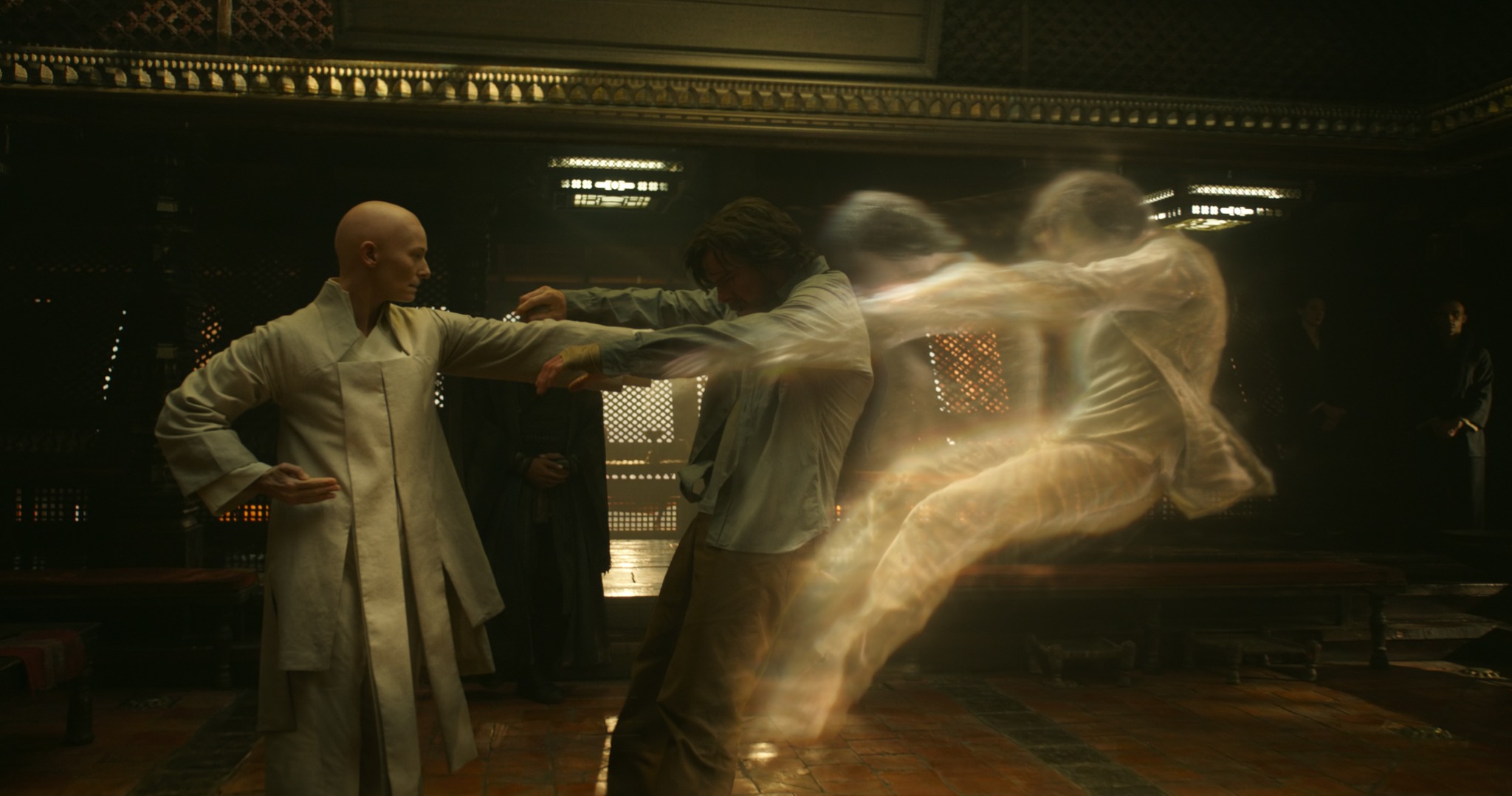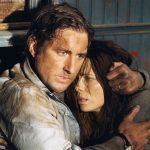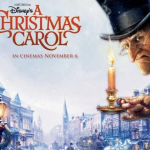Doctor Strange (2016)

Doctor Strange, directed by Scott Derrickson and released in 2016, is a visually stunning and intellectually engaging entry into the Marvel Cinematic Universe (MCU). The film introduces audiences to one of Marvel’s most enigmatic and complex characters, Stephen Strange, portrayed by Benedict Cumberbatch. Through its innovative blend of science fiction, fantasy, and mysticism, Doctor Strange explores themes of personal transformation, the nature of reality, and the power of belief. The film stands out not only for its groundbreaking visual effects but also for its philosophical depth and character development.
The narrative of Doctor Strange follows Dr. Stephen Strange (Benedict Cumberbatch), a highly skilled and arrogant neurosurgeon whose life changes dramatically after a car accident leaves him with severe nerve damage in his hands. Struggling to find a cure and reclaim his surgical precision, Strange exhausts all conventional medical options and eventually turns to alternative medicine.
Strange’s journey leads him to Kathmandu, where he encounters the Ancient One (Tilda Swinton), a mystic who introduces him to the hidden dimensions of reality and the art of sorcery. As Strange delves deeper into the mystical arts, he learns to manipulate time and space and becomes embroiled in a battle against Kaecilius (Mads Mikkelsen), a former disciple of the Ancient One who seeks to merge Earth with the Dark Dimension, a realm of chaos and destruction.

The film’s central themes include personal redemption, the nature of reality, and the conflict between order and chaos. Doctor Strange explores the transformation of its protagonist from a self-centered individual to a selfless hero who embraces a larger purpose. The film also delves into philosophical questions about the nature of existence and the role of belief in shaping reality.
Benedict Cumberbatch’s portrayal of Stephen Strange is a standout element of the film. Cumberbatch brings a charismatic intensity to the character, capturing Strange’s initial arrogance, his gradual acceptance of a greater reality, and his ultimate growth into a wise and powerful sorcerer. Cumberbatch’s performance is both nuanced and engaging, making Strange’s transformation and journey compelling and relatable.
Tilda Swinton’s portrayal of the Ancient One adds a layer of mystique and authority to the film. Swinton’s performance embodies the character’s wisdom and strength, while also subverting traditional depictions of the wise mentor. Her role is pivotal in guiding Strange’s development and introducing the audience to the film’s complex mystical elements.

Mads Mikkelsen’s portrayal of Kaecilius serves as an effective antagonist, providing a contrast to Strange’s character and presenting a philosophical challenge. Kaecilius’s motivations, driven by a desire to transcend the limitations of mortal existence, add depth to the film’s exploration of the conflict between order and chaos.
The supporting cast, including Rachel McAdams as Christine Palmer and Chiwetel Ejiofor as Mordo, contribute to the film’s emotional and narrative depth. McAdams’s role as Strange’s former colleague and love interest adds a personal dimension to his journey, while Ejiofor’s portrayal of Mordo, a fellow sorcerer, introduces a complex character whose own path diverges from Strange’s.
Scott Derrickson’s direction in Doctor Strange is marked by its innovative approach to visual storytelling. The film is renowned for its groundbreaking visual effects, which depict the manipulation of time and space in mind-bending and visually arresting ways. The use of surreal landscapes, rotating cities, and intricate portals creates a unique and immersive experience that reflects the film’s mystical themes.
The cinematography, by Ben Davis, complements Derrickson’s direction with its dynamic and imaginative visuals. Davis’s work captures both the grandeur of the mystical dimensions and the intimate moments of character development. The film’s visual style enhances its exploration of the metaphysical and the philosophical, making the fantastical elements of the story both believable and awe-inspiring.
The score, composed by Michael Giacchino, adds to the film’s atmosphere with its blend of orchestral and mystical music. Giacchino’s score underscores the film’s emotional and action-packed moments, enhancing the overall impact of the narrative and contributing to the immersive experience.

Doctor Strange delves deeply into themes of transformation and reality, offering a philosophical and spiritual exploration of the nature of existence. The film portrays Stephen Strange’s journey as a path of personal redemption and self-discovery. Through his experiences with the mystical arts, Strange learns to see beyond his own desires and embrace a greater purpose.
The film’s depiction of the multiverse and the manipulation of time and space challenges conventional perceptions of reality. Doctor Strange explores the idea that reality is fluid and shaped by perception and belief, inviting viewers to reconsider their understanding of the universe and their place within it.
Additionally, the conflict between order and chaos is a central theme of the film. The battle between Strange and Kaecilius highlights the tension between the desire for transcendence and the need for balance and stability. The film’s resolution reinforces the importance of maintaining order and harmony in the face of chaos and destruction.
Doctor Strange (2016) is a visually stunning and intellectually stimulating film that offers a unique perspective on the superhero genre. Through its innovative visual effects, compelling performances, and philosophical depth, the film explores themes of transformation, reality, and the nature of existence. Scott Derrickson’s direction and Benedict Cumberbatch’s portrayal of Stephen Strange create a memorable and impactful cinematic experience, making Doctor Strange a significant and thought-provoking entry in the Marvel Cinematic Universe. The film’s blend of mysticism and science fiction, combined with its exploration of complex themes, ensures its place as a standout and enduring piece of modern cinema.











